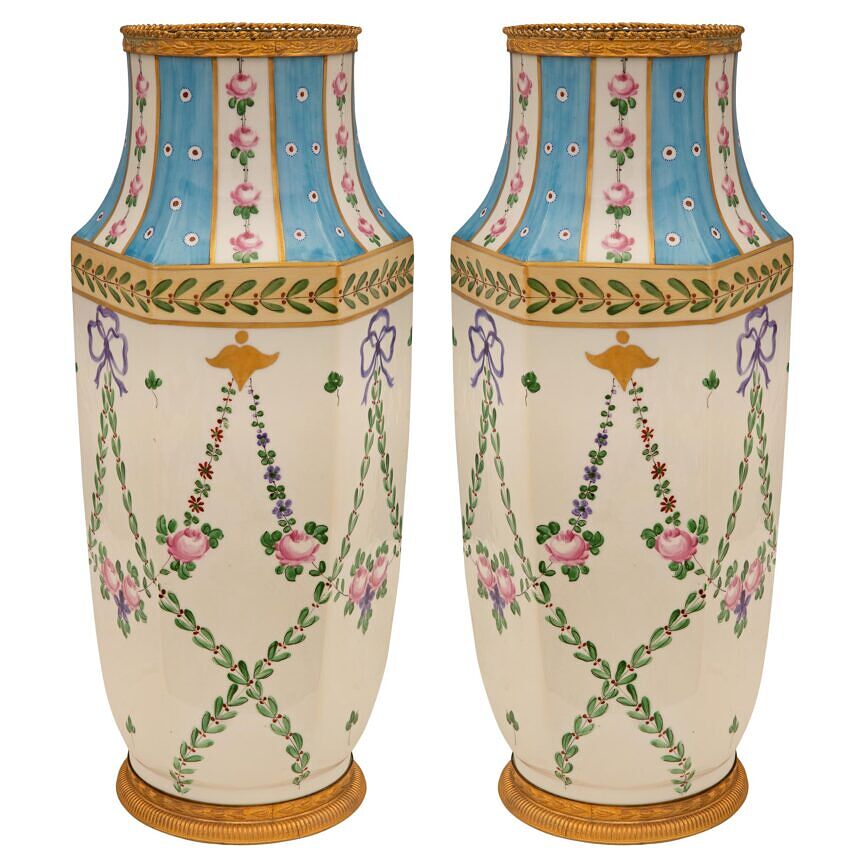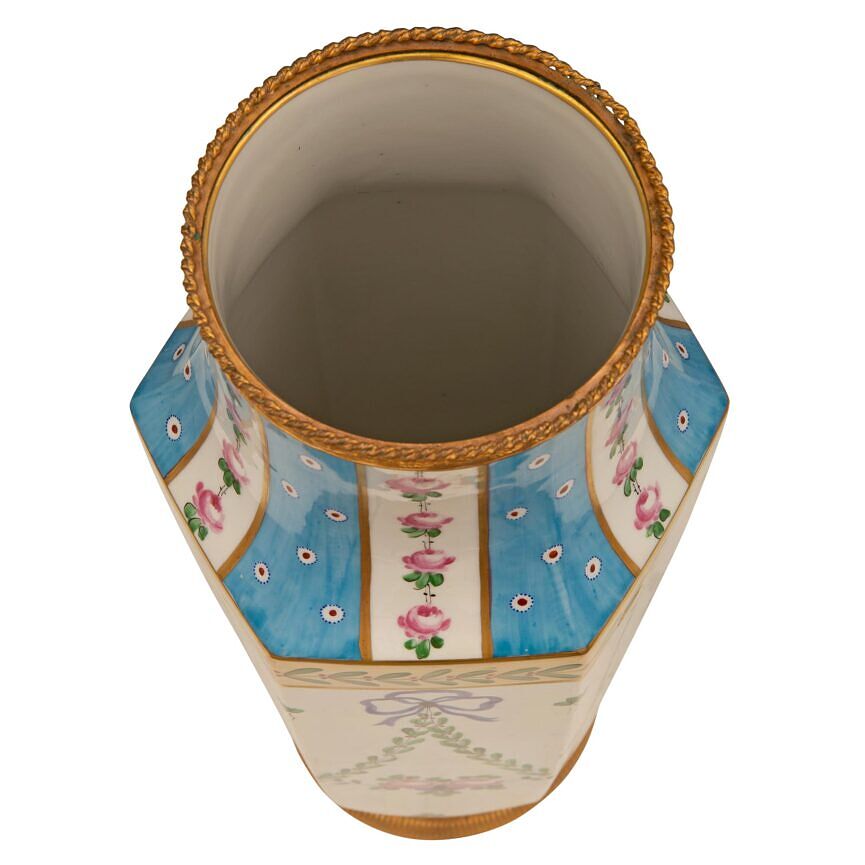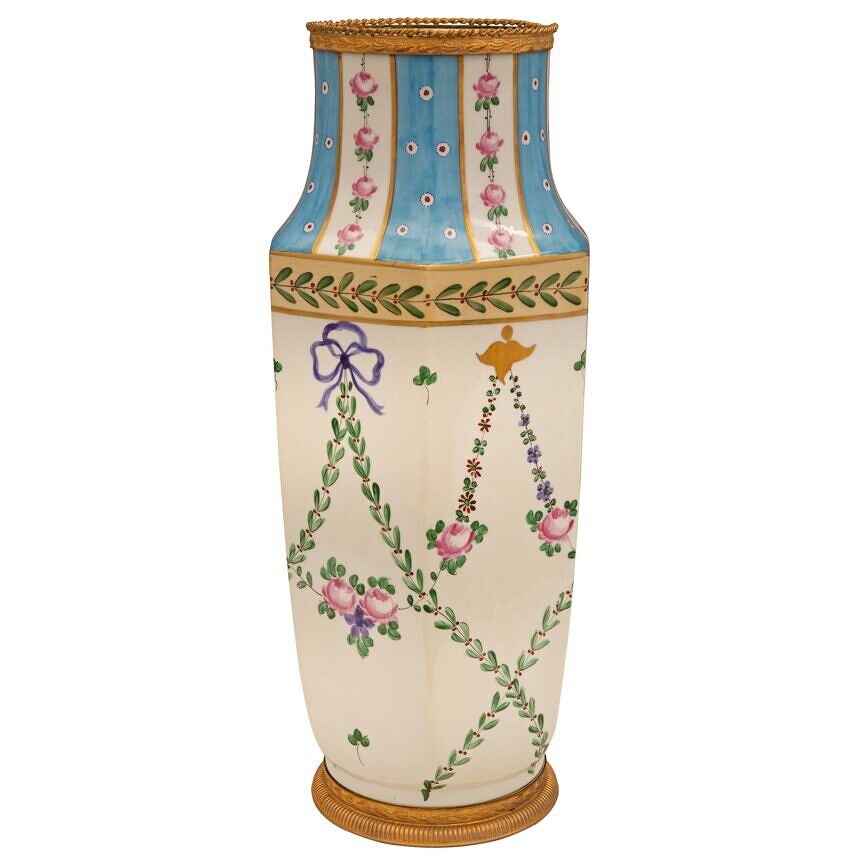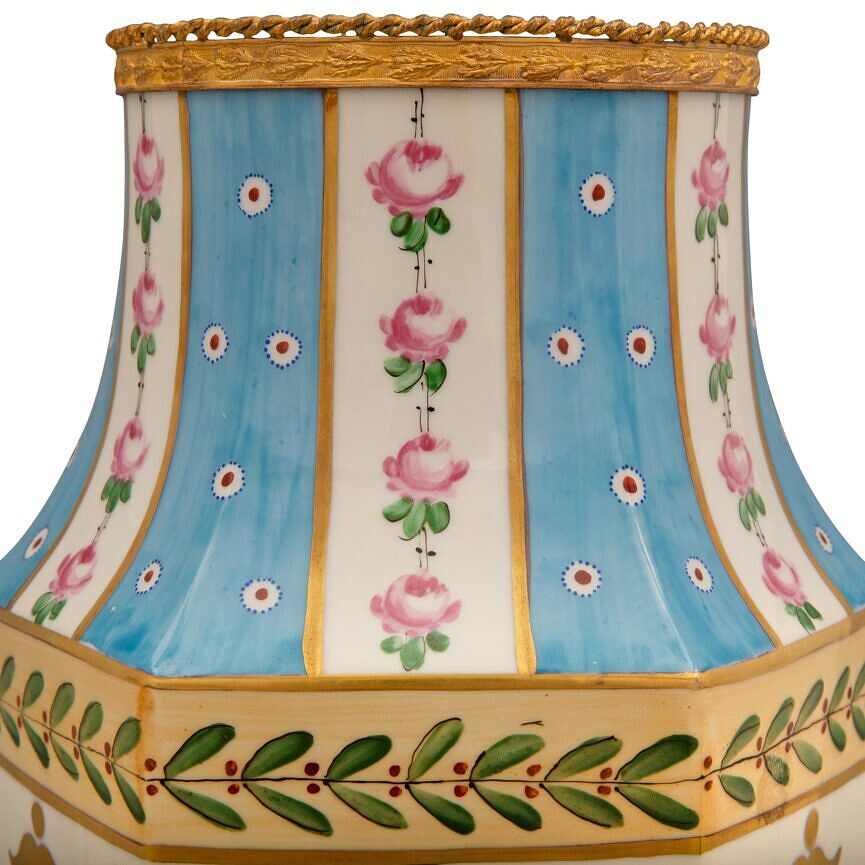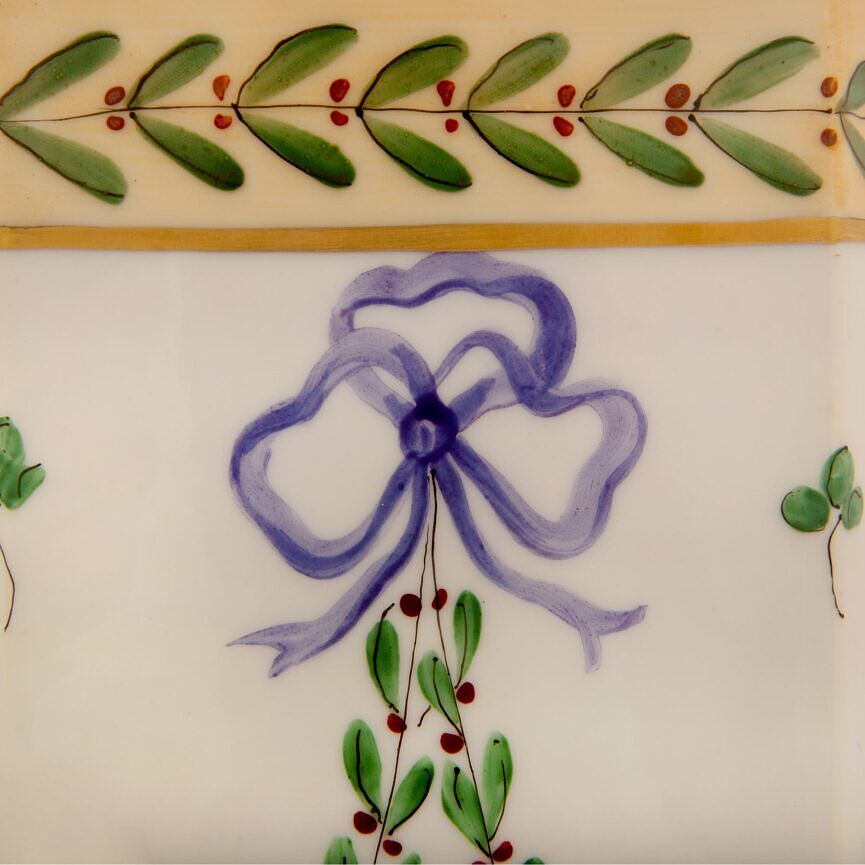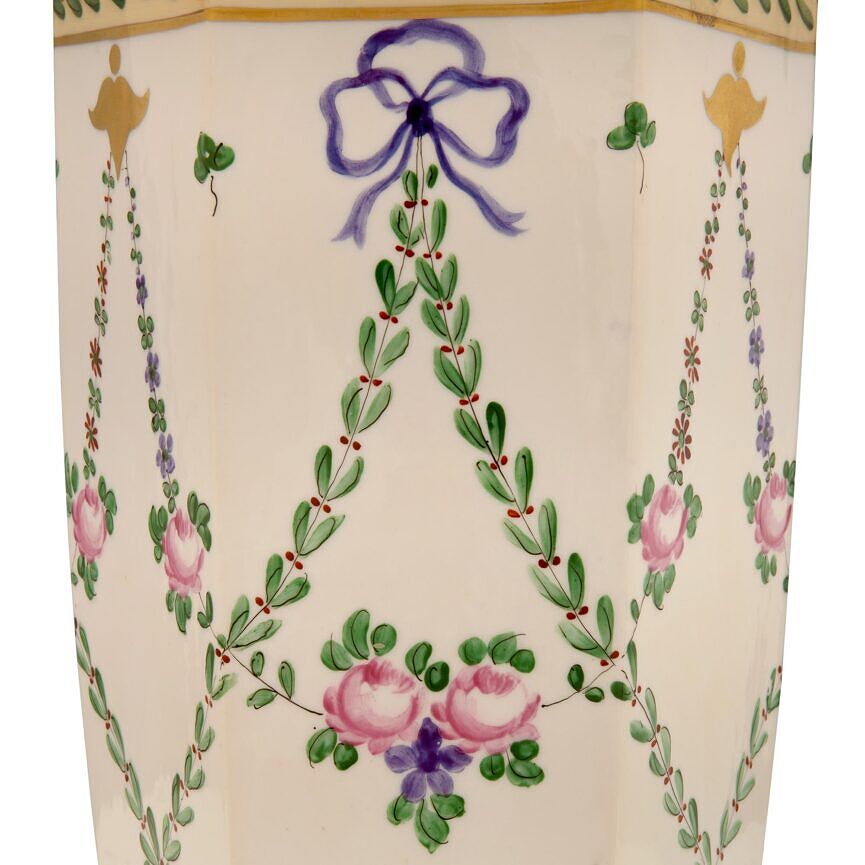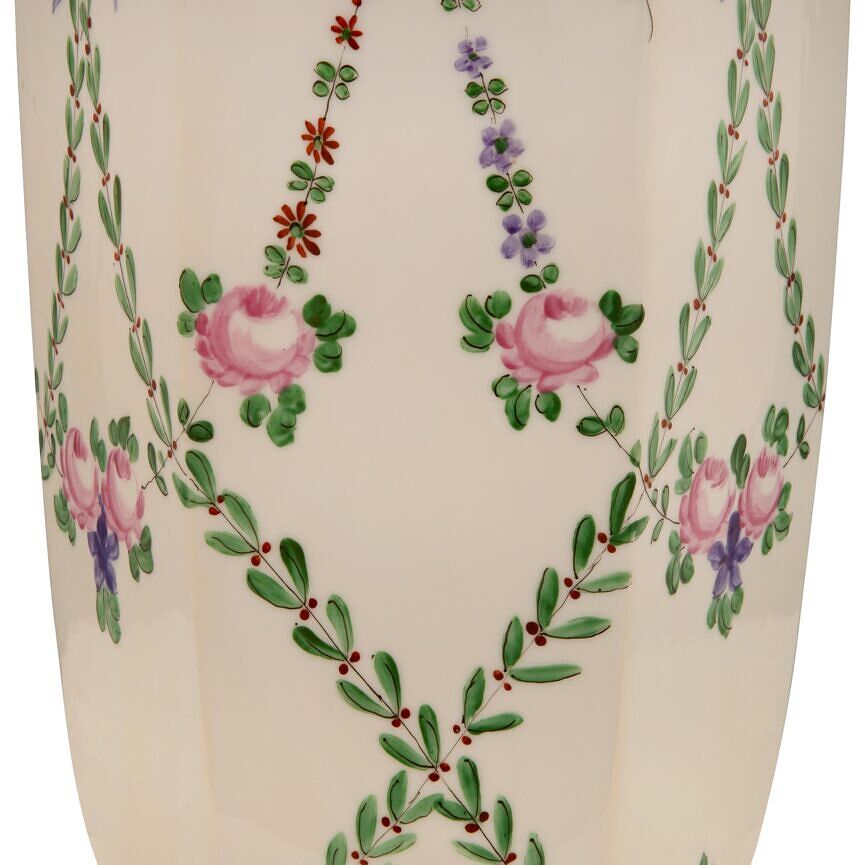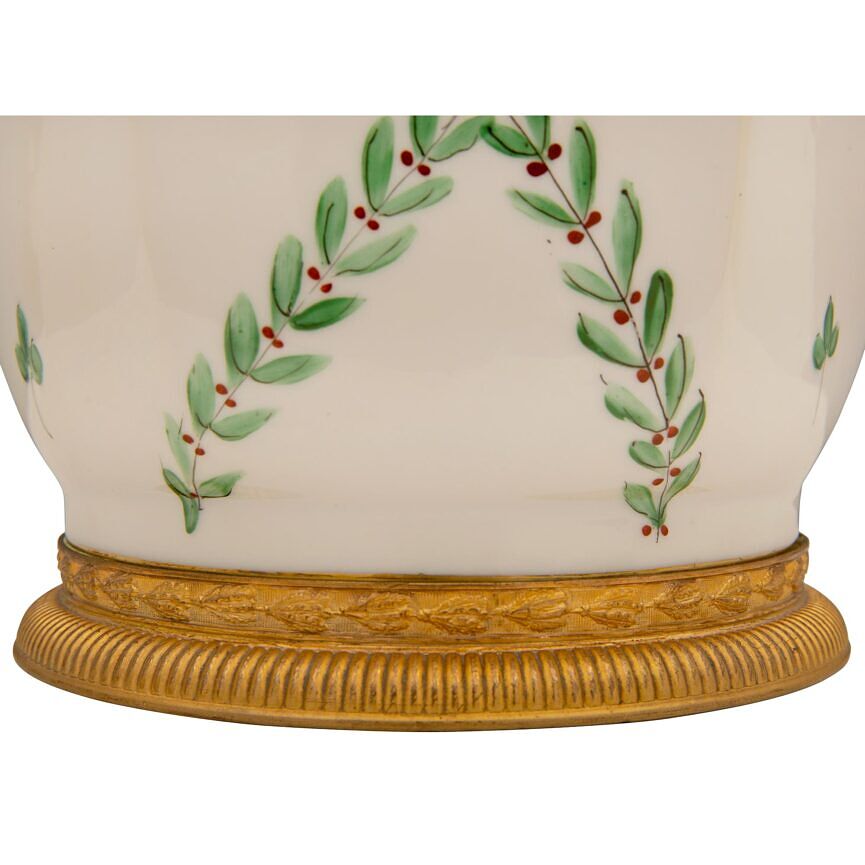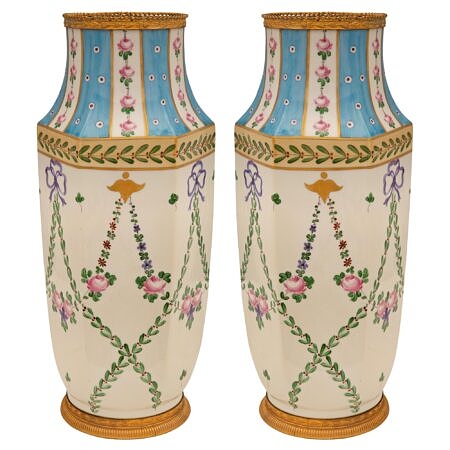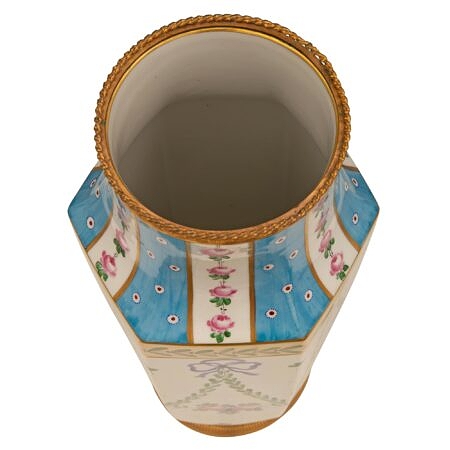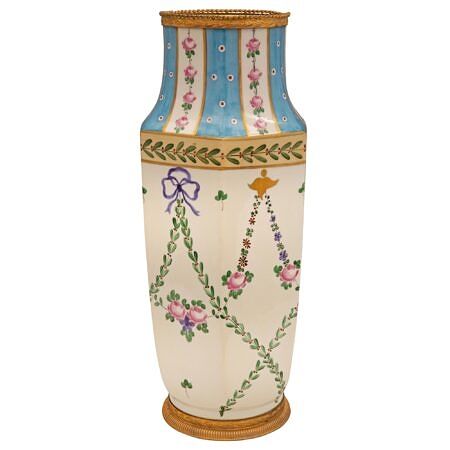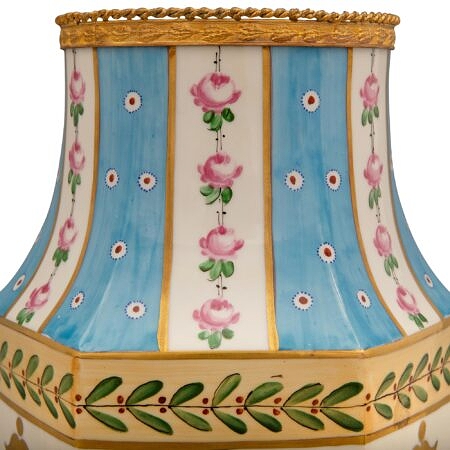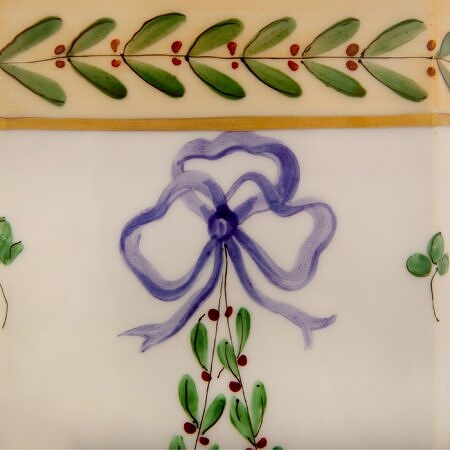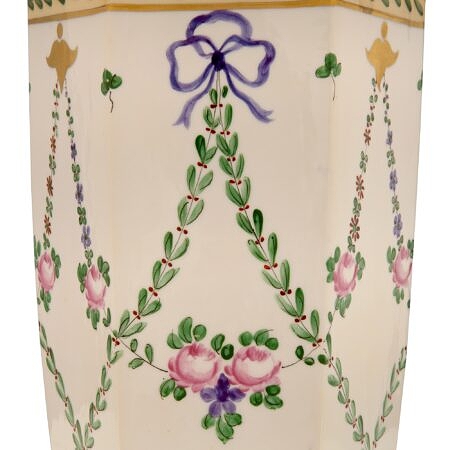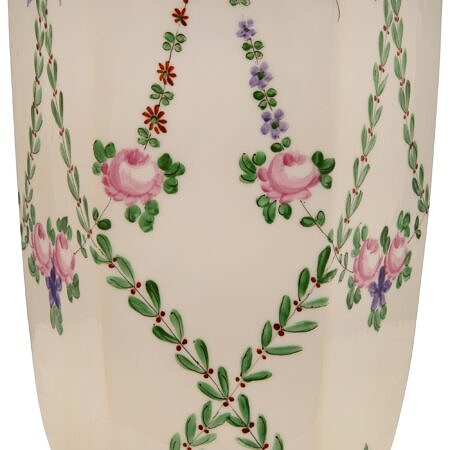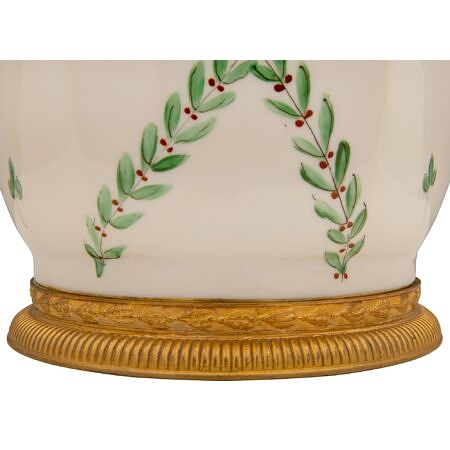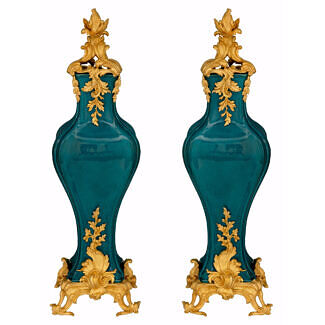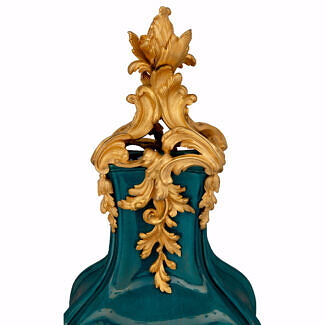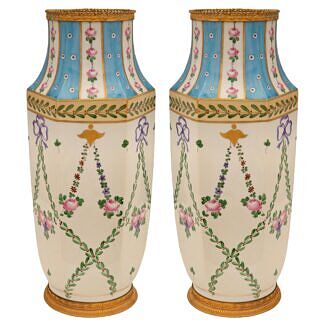A pair of French 19th century Louis XVI st. Sèvres porcelain and ormolu vases
Sorry, This item has sold
A charming pair of French 19th century Louis XVI st. Sèvres porcelain and ormolu vases. Each beautiful hand painted vase is raised by a finely chased circular ormolu band with a lovely reeded and laurel branch design. The hexagon shaped... — Read More
A charming pair of French 19th century Louis XVI st. Sèvres porcelain and ormolu vases. Each beautiful hand painted vase is raised by a finely chased circular ormolu band with a lovely reeded and laurel branch design. The hexagon shaped vases have an off white background decorated with green and lavender color foliate garlands accented with pink flowers and charming bows. The elegantly curved necks display lovely bands with pastel colors and designs below finely chased berried laurel and beaded ormolu top bands. All original gilt. — Read Less
- Item # 5460
-
H: 17 in L: 7.5 in D: 7.5 in
H: 43 cm L: 19 cm D: 19 cm
- France
- 19th Century
- Ormolu, Porcelain
- Louis XVI st. Read More
- Sèvres Read More
It was founded through the support of King Louis XV of France and at the initiative of Madame Pompadour to be located near her Château.
Due to Sèvres’ reputation for excellence and prestige, it has always attracted some of the best artists throughout history; François Boucher, Albert-Ernest Carrier-Belleuse, Étienne Maurice Falconet, Alexandre Fragonard and August Rodin, just to name a few. Many of these artworks can be seen at the Louvre Museum and the Musée National de Céramique in France.
Initially, Sèvres created a soft paste porcelain know as Biscuit de Sèvres. In 1768 the Bordeaux chemist Villaris and Jean Baptiste Darnet discovered deposits of Kaolin on French soil. In 1771 the Royal Academy sent a report on the creation of hard paste porcelain at which time Sèvres began manufacturing hard paste porcelain.
Louis-Simon Boizot (1743–1809) was a French sculptor renowned for creating Biscuit de Sèvres models, and was the director at Sèvres from 1774-1800, followed by Alexandre Brogniart(1800-1847) and Henri Victor Regnault in 1854.


